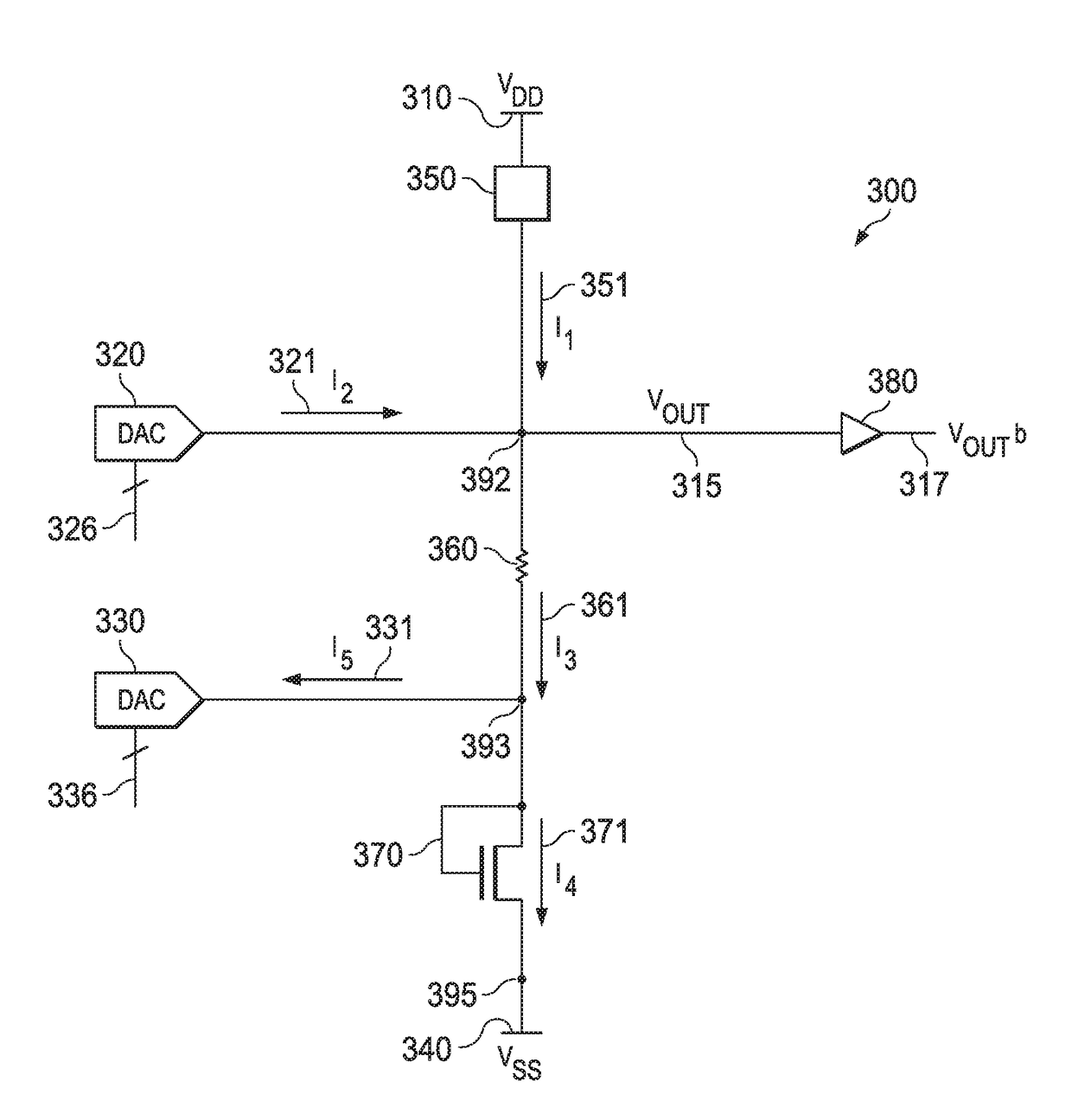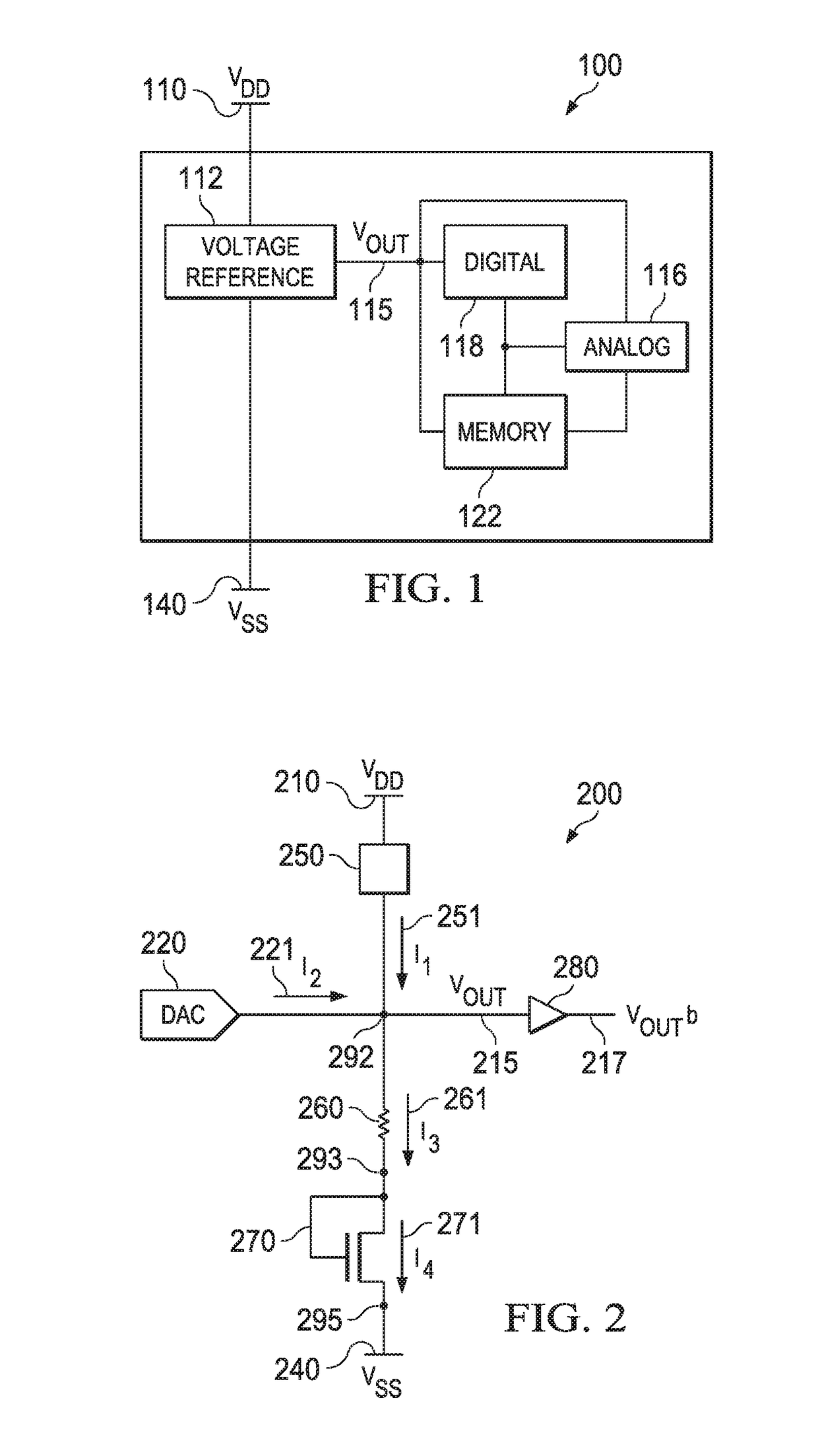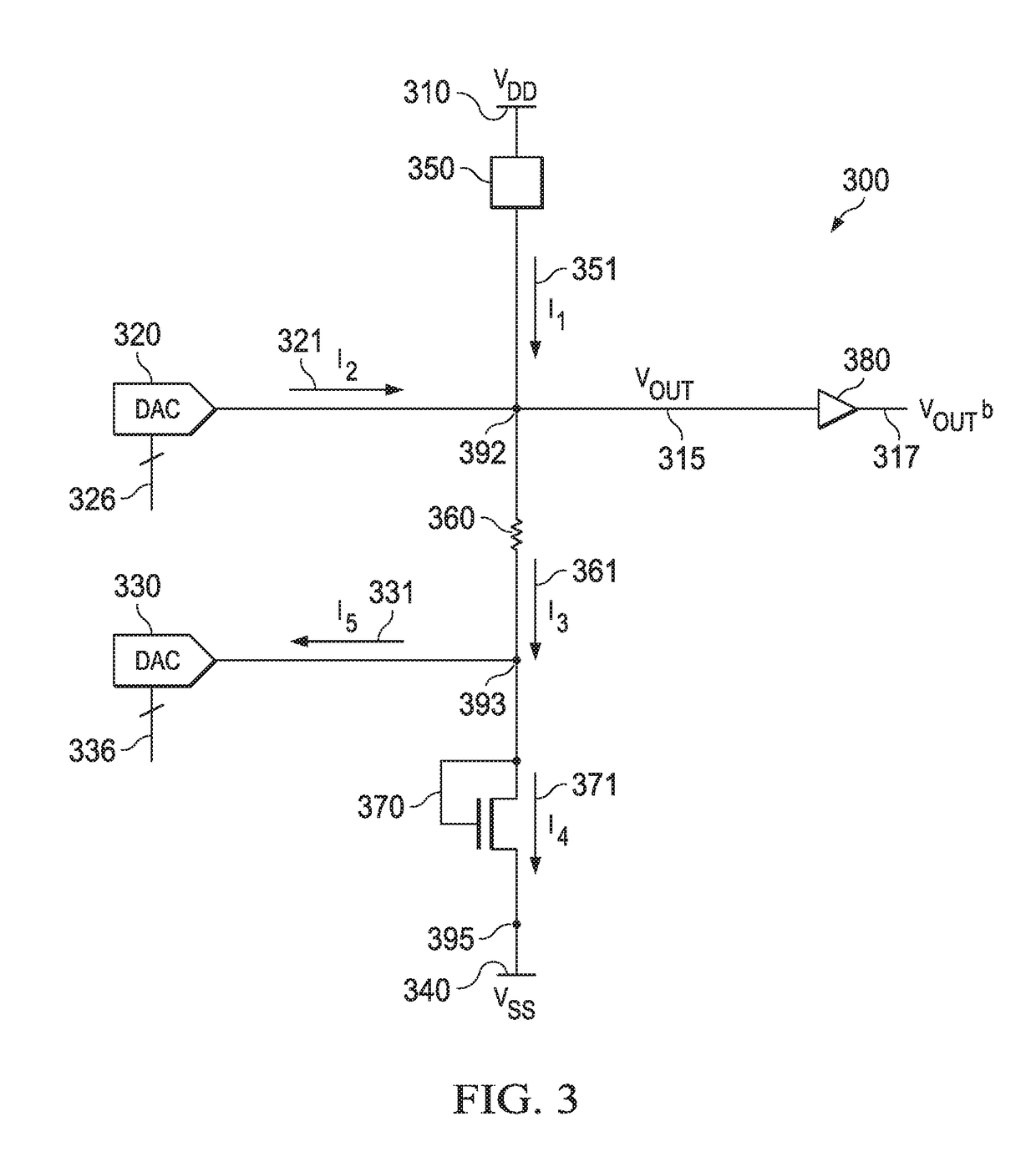CMOS low voltage bandgap reference design with orthogonal output voltage trimming
a low-voltage bandgap and output voltage technology, applied in the field of semiconductor integrated circuits, can solve the problem that existing bvr circuit designs do not provide the necessary accuracy
- Summary
- Abstract
- Description
- Claims
- Application Information
AI Technical Summary
Benefits of technology
Problems solved by technology
Method used
Image
Examples
Embodiment Construction
[0008]In bandgap reference design, a precision voltage reference insensitive to process, supply voltage and temperature is obtained by summing a voltage that is proportional to absolute temperature (PTAT) and a voltage with negative temperature coefficient, which is complementary to absolute temperature (CTAT). In conventional BVR design, the CTAT voltage may be generated using a forward biased p-n junction having a temperature coefficient of −2 mV / ° C. at room temperature. The PTAT voltage may be generated from a voltage difference of similar p-n junctions ratioed by N. When a p-n junction is in forward bias, its current can be expressed as:
ID=ISeqVA / kT (EQ. 1)
where k is the Boltzmann constant, q is the electron charge and T is the temperature, and VA is a voltage across the p-n junction. In some embodiments, a diode-connected metal-oxide-semiconductor field-effect transistor (MOSFET) may be used in place of the p-n junction and the VA term from equation (1) may be VGS, a gate-sou...
PUM
 Login to View More
Login to View More Abstract
Description
Claims
Application Information
 Login to View More
Login to View More - R&D
- Intellectual Property
- Life Sciences
- Materials
- Tech Scout
- Unparalleled Data Quality
- Higher Quality Content
- 60% Fewer Hallucinations
Browse by: Latest US Patents, China's latest patents, Technical Efficacy Thesaurus, Application Domain, Technology Topic, Popular Technical Reports.
© 2025 PatSnap. All rights reserved.Legal|Privacy policy|Modern Slavery Act Transparency Statement|Sitemap|About US| Contact US: help@patsnap.com



